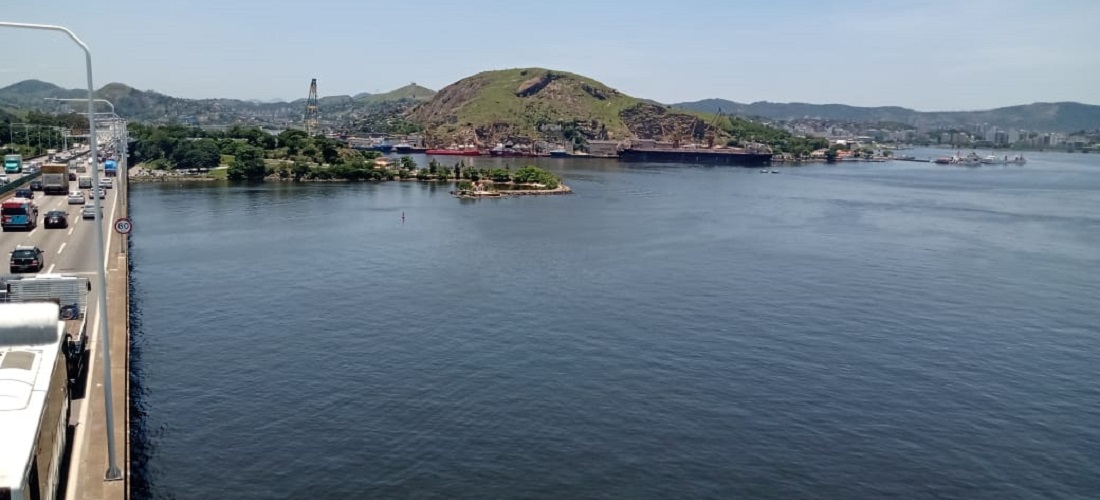
Docas do Rio installs vídeo cameras at Rio-Niterói bridge
Dec, 03, 2020 Posted by Ruth HollardWeek 202050
Upon the signing of a Special Non-Onerous Use Permission Agreement signed with Ecoponte, Companhia Docas do Rio de Janeiro (CDRJ) installed five CCTV cameras at the Rio-Niterói bridge. They are part of the Port Guard Security System with images provided by the company 7Lan. The installation, which took place during the second half of October, is a complement to the two cameras already installed at the Sugarloaf Mountain cable car and the one to be installed in the Brazilian army’s Fortaleza de Santa Cruz da Barra.
The Port Authority’s objective is to implement use a Local Port Service (LPS) in the Ports of Rio de Janeiro and Niterói. According to Marcelo Villas-Bôas, the Vessel Traffic Management and Information System (VTMIS) Manager for the Port of Rio de Janeiro, “the LPS represents the first phase of the VTMIS implementation process in Rio de Janeiro, and it will expand the capacity for monitoring waterway traffic through images from high definition cameras in the access channels, anchoring areas, and evolution basins”.
VTMIS aims to improve navigation safety, as it reduces the risk of accidents, increases the efficiency of vessel traffic – with real-time information that maximizes the use of port facilities – and optimizes the use of the pier, in addition to reducing response time emergencies. Image monitoring will be essential for:
- Inspection of the use of port accesses, with the accompaniment and monitoring of vessels that use the water infrastructure of the Organized Port, especially the night maneuvers of ships in the Cotunduba Canal;
- Inspection of the approach of vessels to moored and anchored ships;
- visual inspection of the physical conditions of the docking facilities (quays and dolphins) by the sea;
- Verification of possible misconduct in the access channels, anchoring areas, and evolution basins of the Organized Port, in particular, commercial fishing, leisure, nautical sports, or water tourism activities;
- Verification of the operational conditions of the nautical signaling of the Organized Port;
- Monitoring of the transport of CDRJ employees for studies, projects, and/or eventual services to be performed in the maritime area of the Organized Port; and;
- Inspection of compliance with the Normative Instructions on “Oil Pollution Prevention for Moored or Anchored Vessels in the Organized Ports of the State of Rio de Janeiro” and “Oily Residues in Anchoring Areas”.
-
Ports and Terminals
Oct, 17, 2023
0
Pernambuco-native Francisco Martins takes over presidency of PortosRio
-
Ports and Terminals
Jun, 09, 2022
0
Port sector grows wary of late Santos auction
-
Shipping
Sep, 30, 2022
0
Valemaxes are squeezing capes for Brazilian iron ore exports
-
Grains
Jan, 12, 2023
0
Drought: Report warns of Argentina worst agricultural season in five years


